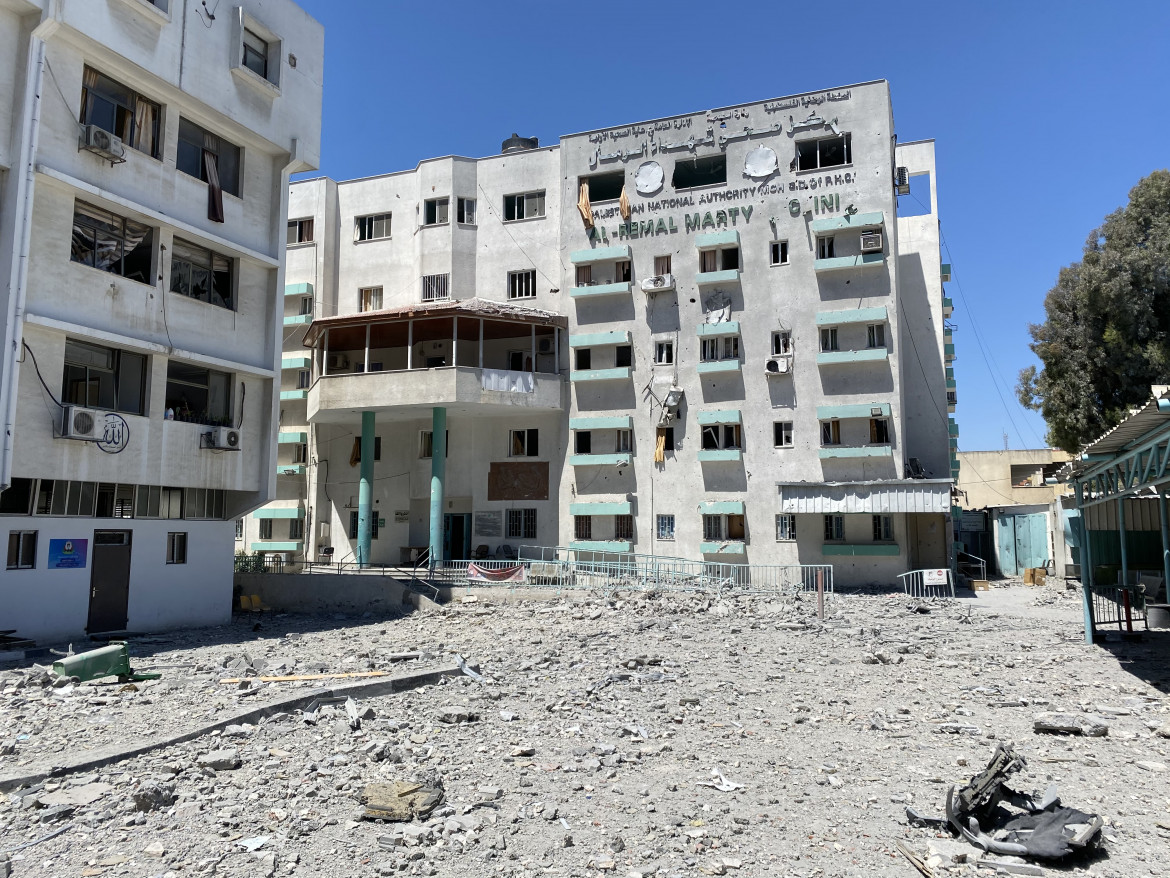Reportage
In Gaza, the shadow of COVID hangs over a stalled reconstruction
Air raids have forced the population to abandon social distancing, and in recent days Gaza health authorities had predicted a surge of infections, which occurred just as expected.

“There are transformers that have been completely destroyed (by airstrikes), and our workers are doing what they can to repair the power grid. But the main problem remains industrial diesel fuel. We don’t have enough to run the plant at full capacity.”
On Monday, in an interview on Shaab Radio, engineer Mohammed Thabet explained some of the many problems that Gedco, Gaza’s electricity company, is facing every day, trying to distribute as much energy as possible to the population. There is little available: 3-4 hours a day. And more energy is needed now in Gaza than ever before, to repair the damage to the infrastructure, to keep the sewage treatment plants running and to help hospitals conserve fuel supplies for the autonomous generators.
The list of priorities is long, and those who go through it usually accompany it with the word “reconstruction,” which is on everyone’s lips in the aftermath of the escalation between Israel and Hamas. But this time too, as has been the case after the other major Israeli military offensives against Gaza—in 2008, 2012, 2014—“reconstruction” remains only an idea. The richest countries promise funds knowing that they will not actually send them. They would like Hamas to suddenly vanish, but the Islamic movement is still there, in power in Gaza. And everything remains at a standstill.
In 2009, in the months following the first Israeli war in Gaza (“Operation Cast Lead”), international donors pledged $4.5 billion to support the Palestinian economy and the reconstruction of the Gaza Strip. Almost nothing came of it. In October 2014, a few months after the end of the “Operation Protective Edge” offensive, the same international donors said they were ready to make $5.4 billion available. Three years later, only $194 million of the promised billions had been disbursed, and the Palestinians have rebuilt what they could on their own.
The same situation is occurring now. Donors don’t feel protected enough by a non-binding cease-fire, they’re finding it hard to intervene while the Palestinians are divided and ruled by two rival parties (Fatah and Hamas), and, most of all, they dare not ignore Israel’s ban on cooperation with the Islamic movement’s officials in reconstruction projects. For years, Israel has restricted the entry of reconstruction materials into Gaza, because, it claims, they would be used by Hamas to build underground tunnels. An UNDP report states that in 2017, from the $602 million allocated to revitalize the productive sector in Gaza, only $16 million was spent, due to the very strict conditions imposed by Israel.
In the background of the “post-war” situation, there is also the COVID emergency, now forgotten, even though the pandemic in Gaza was a topic of concern during the days of the Israeli raids due to the damage suffered by the Hala al-Shawa health center, a vaccination site and the main laboratory for the testing of swabs, and the killing in an air raid of Dr. Ayman Abu Alouf, responsible for anti-COVID measures in the Strip.
Nevertheless, the coronavirus continues to circulate in the Occupied Palestinian Territories. And while in the West Bank there have been fewer positive cases and few deaths for the past month, in Gaza there was a boom in infections just before the military escalation that filled up the few intensive care units available in hospitals.
Air raids have forced the population to abandon social distancing, and in recent days Gaza health authorities had predicted a surge of infections, which occurred just as expected. Of the Palestinians who have tested positive in the last week, 84% were in Gaza and 16% in the West Bank. The World Health Organization puts Gaza’s positivity rate at 25% of tests, compared to 5% in the West Bank. Mortality has risen to 3.4%.
Vaccines have been, and remain, a mirage, even as there are a few more vials arriving compared to the past months. In recent days, UNICEF has delivered 9,600 doses of AstraZeneca vaccine in Gaza, and in the previous week, 20,000 doses of the Sinopharm vaccine had entered the Strip, along with 46,800 Pfizer doses. 486,900 doses of vaccines have been shipped to the West Bank and 196,500 to Gaza, and over 300,000 West Bank residents have been vaccinated, but only 39,937 in Gaza. In total, just 7% of Palestinians have been vaccinated. In Israel, about 60% of the 9.3 million inhabitants have received two doses.
Originally published at https://ilmanifesto.it/gaza-lombra-del-covid-sulla-ricostruzione-che-non-parte/ on 2021-06-08
